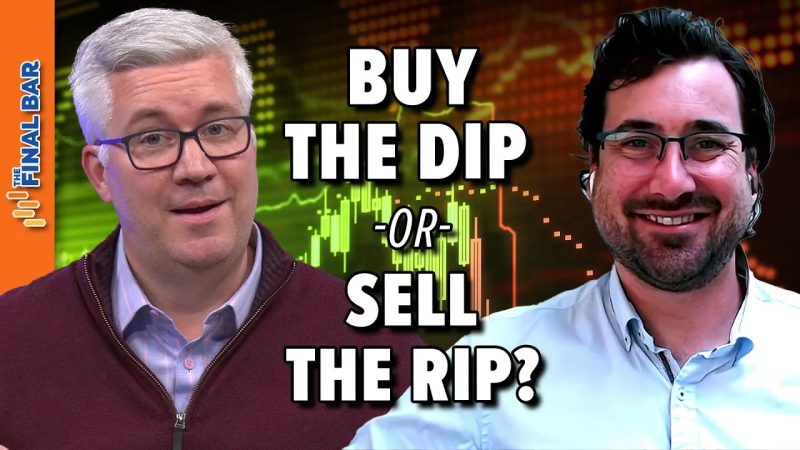In the ever-evolving world of finance and investing, the age-old question of whether to buy the dip or sell the rip continues to perplex both seasoned traders and newcomers to the market. This debate hinges on the strategic decision-making process that investors face when confronting market fluctuations. The concept of buying the dip refers to purchasing assets when their prices have declined, anticipating a rebound in the near future. Conversely, selling the rip involves offloading assets after a sharp price increase, in anticipation of a potential downturn. Both strategies have their merits and pitfalls, and understanding when to employ each tactic can greatly influence an investor’s success in the market.
When considering whether to buy the dip, investors must weigh various factors to make an informed decision. Market volatility, economic indicators, and company-specific news can all influence an asset’s price movement. Buying the dip can be an opportunity to capitalize on undervalued assets, particularly if the market overreacts to negative news or events. By purchasing assets at a discounted price, investors stand to profit when prices inevitably rise back to their intrinsic value. However, buying the dip inherently carries risks, as prices may continue to fall or fail to rebound as expected. In such cases, investors may face capital losses if they miscalculate the market sentiment or fail to conduct thorough research before making their investment.
On the other hand, the strategy of selling the rip aims to capitalize on market peaks and take profits before a potential downturn. Selling high allows investors to lock in gains and protect their capital from potential losses in the event of a market correction. By selling overvalued assets, investors can redeploy their capital into better opportunities or hedge against future market volatility. However, selling the rip requires a keen sense of market timing and the ability to resist the temptation of holding out for even greater gains. Failing to sell at the right moment could result in missed profit opportunities or holding onto assets that decline in value, eroding overall portfolio performance.
Ultimately, the decision to buy the dip or sell the rip should be based on a comprehensive analysis of market conditions, risk tolerance, and investment objectives. No strategy guarantees success in the volatile world of finance, and each approach carries its own set of risks and rewards. Investors must remain disciplined, continuously assess market trends, and adapt their strategies accordingly to maximize their chances of success. By carefully considering the factors at play and maintaining a prudent approach to investing, individuals can navigate market uncertainties with confidence and achieve their financial goals in the long run.
